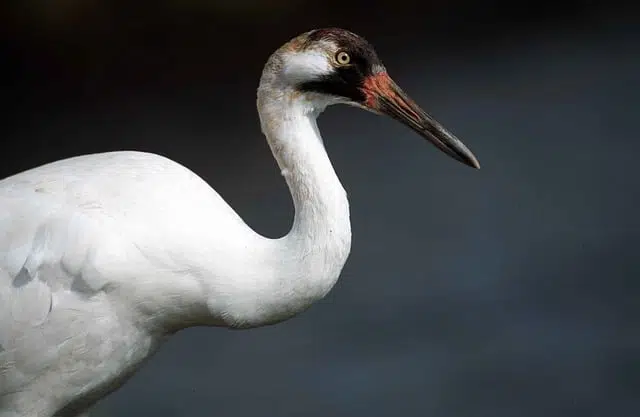There are beautiful birds all around the world. Some of these winged creatures depict nature’s work of art. Their blend of color combinations leaves us in admiration. For reasons, most due to human activity, many birds all around the world are endangered. We have created a list of the 17 most endangered birds worldwide.
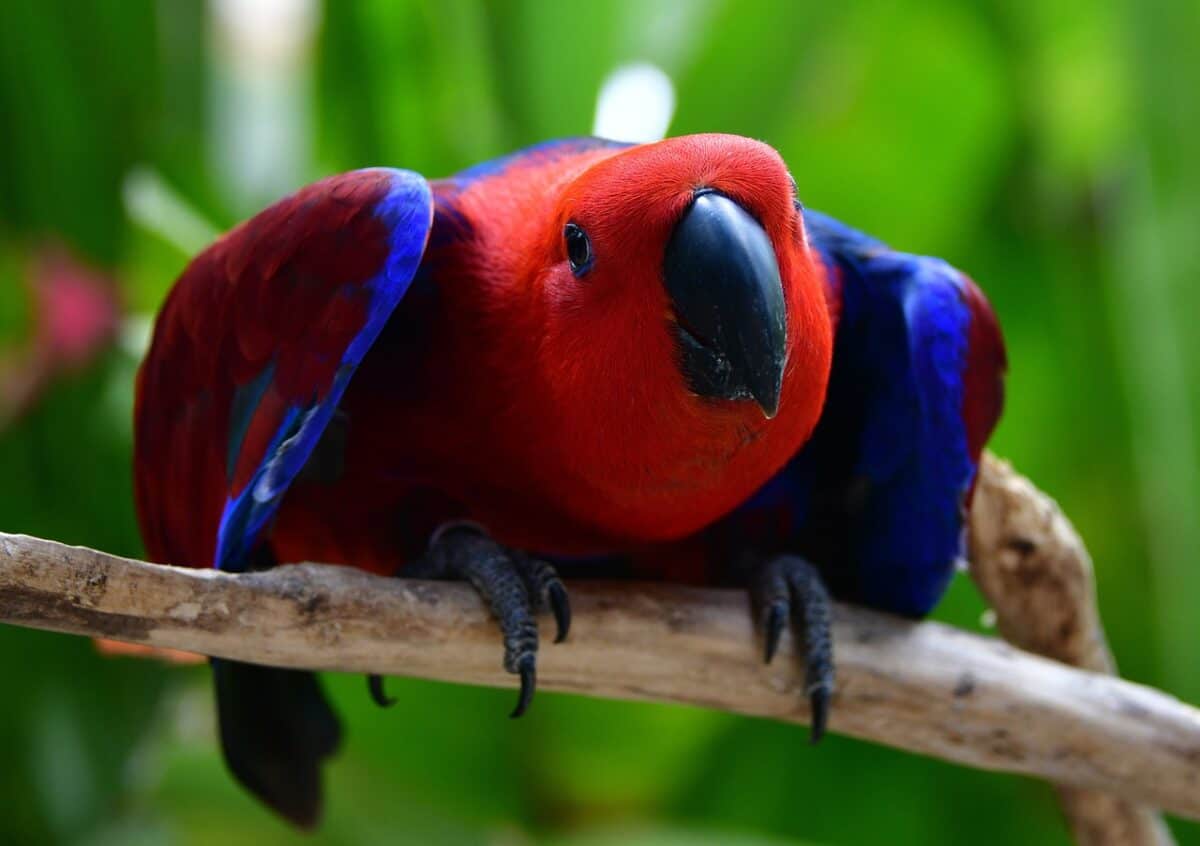
Birds play key roles in the ecosystems all over the world, including as pollinators for plants and in helping to control populations of plants and animals.
Sadly, these numerous birds have been victim of endangerment or are vulnerable to extinction. They are decreasing in number due to an increase in deforestation, which is destroying their habitats. Climate change is another reason for the endangerment of these birds.
The high rate of pollution in the air is a threat to birds as it hurts their lungs, making it hard for them to breathe. Furthermore, many exotic-looking birds are hunted to be used as decorations, whether stuffed whole or picked for their feathers or other features.
How we determine if these birds are endangered is by calculating their population. If the population is decreasing, the bird species are vulnerable to extinction. These calculations are carried out by various organizations that compile a list of endangered birds such as the IUCN Red List or the Endangered Species Act List in the United States.
Key Points
| Bird Species | Description | Geographical Distribution | Level of Endangerment | Diet |
|---|---|---|---|---|
| 1. Black-Browed Albatross | White bird with black wings, reddish-orange eyebrows | Southern oceans and neighboring islands | Endangered, only 5,409 remaining | Fish, crustaceans, squid, carrion, fishery remains |
| 2. Eskimo Curlew | Small bird, spotted brown, breeds in Canada and Alaska | Worldwide, breeds mainly in Canada and Alaska | Highly Endangered, possibly extinct | Berries, small insects |
| 3. African Grey Parrot | Medium-sized grey parrot with large wingspan | Endemic to Africa and regions near the equator | Endangered, declining population due to trade | Fruits, nuts, flowers, tree bark |
| 4. Hawaiian Crow | Crow with a thicker bill and rounded wings | Southwestern and western regions of Hawaii | Extinct, possibly due to diseases | Omnivorous, feeding on plants and animals |
| 5. Fruit Doves | Small to medium-sized doves with colorful bodies | Island of New Guinea (Philippines) | Highly Endangered, population decline due to snakes | Fruits |
| 6. Piping Plover | Small shorebird with khaki-colored skin | Atlantic coast in the US and Canada | Endangered, less than 10,000 remaining | Fly larvae, crustaceans, marine worms, mollusks |
| 7. White-Rumped Vulture | Medium-sized vulture with featherless head | South and southeast Asia | Endangered, 6,000 remaining, declining | Carrion, remains of cattle |
| 8. Ivory-Billed Woodpecker | Large woodpecker with purple-black feathers | United States, bottomland and temperate forests | Critically Endangered, less than 50 remaining | Beetle larvae, certain vegetables |
| 9. Kiwi | Flightless bird with a pear-shaped body, furry legs | New Zealand | Vulnerable, 68,000 remaining, habitat loss | Worms, bugs, seeds, grubs, berries |
| 10. Great Curassow | Large bird with black body and white chest | Neotropical rainforests (Mexico, Central America) | Vulnerable, less than 40,000 remaining | Seeds, fruits, berries |
| 11. Regent Honeyeater | Black-headed bird with pale yellow speckles | Southeast Australia | Vulnerable, only 400 remaining, deforestation | Eucalyptus nectar, insects, honeydew |
| 12. Kakapo | Large, rounded parrot with spotted body | Endemic to New Zealand | Endangered, 252 remaining, predation by rats and cats | Plant-based foods, fruits, rimu branches, supple jacks |
| 13. Northern Bald Ibis | Shiny black bird with bronze, green, and violet colors | Middle East, Central and southern Europe, Northern Africa | Endangered, habitat loss and hunting | Grasshoppers, crickets, beetles, small reptiles |
| 14. Hooded Grebe | White bird with dark grey back and red beak | West Argentina, South Chile, Laguna Blanca | Vulnerable, less than 1,000 remaining | Aquatic invertebrates |
| 15. Ultramarine Lorikeets | Colorful parrots with shades of blue and orange | Islands of French Polynesia | Critically Endangered, less than 1,000 remaining | Blossoms, insects, various fruits |
| 16. California Condor | Large black bird with white triangular patterns | Deserts of Central southern California, Mexico, Arizona, Utah | Critically Endangered, less than 500 remaining | Carrion, small animals |
| 17. Whooping Crane | White bird with red crown and long neck | North America, Canada, Alberta | Endangered, only 800 remaining | Eel, crustaceans, frogs, aquatic plants, insects |
17 Most Endangered Birds
Below is a list of bird species that are vulnerable to endangerment or are on the verge of endangerment.
#1 Black-Browed Albatross
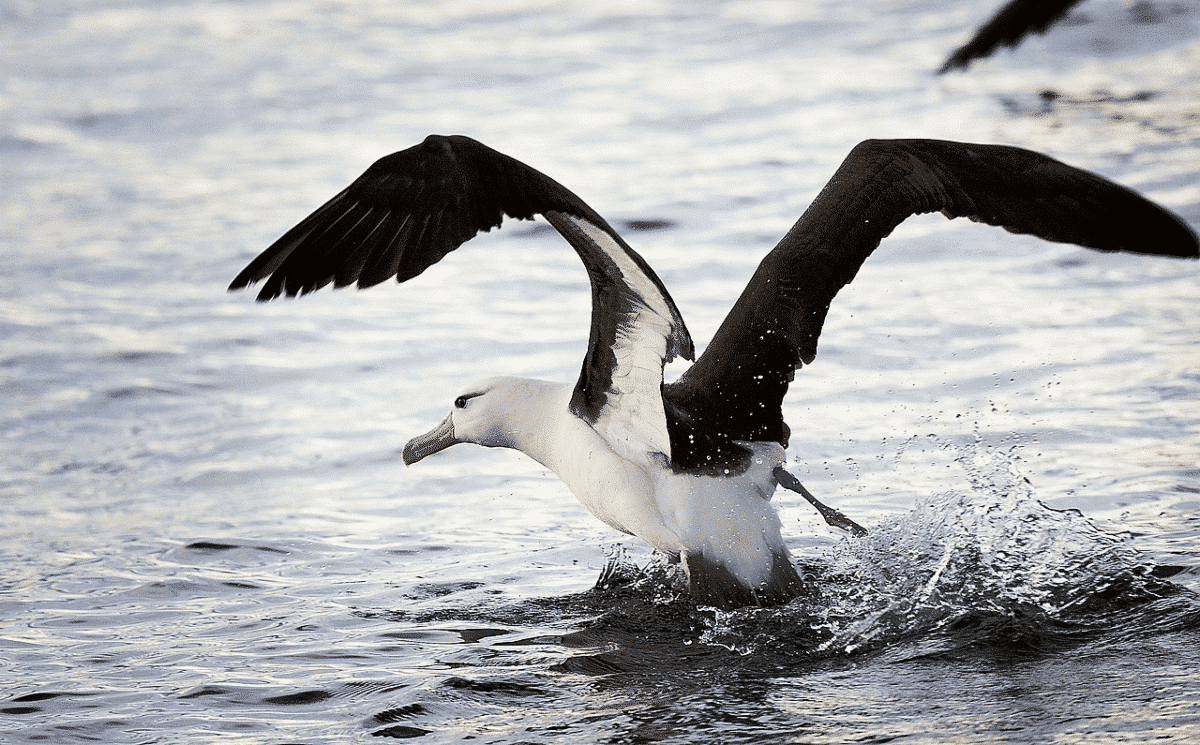
Description:
This bird is a white medium-sized bird having black margins on its wings. Their eyebrows are dark colored with a reddish-orange tip. It is 95 centimeters long having an average weight of 4.7 kilograms.
Geographical Distribution:
It is mostly sighted in the southern oceans and its neighboring islands.
Level Of Endangerment:
Their population has immensely reduced therefore they are on the list of endangered species. Based on calculations, only 5,409 birds remain. They have fallen victim to human hunting at various fisheries.
Diet:
It likes to feed on fish and crustaceans, squid, carrion, and fishery remains.
#2 Eskimo Curlew
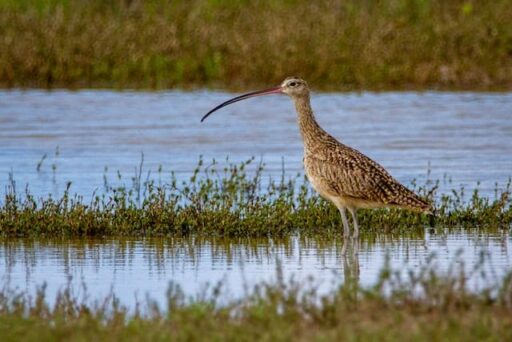
Description:
It is a small-sized bird having a length of 30 centimeters and a weight of a mere 360 grams. They have a spotted brown base on their body and the underneath of their body is light brown. Mature adults have long legs.
Geographical Distribution:
They are a ”new world bird”, meaning it exists in many parts of the world. However, their species typically breeds in the region of Canada and Alaska.
Level Of Endangerment:
With only 50 beings remaining these birds are highly endangered. There is a high chance that they are in fact already extinct.
Diet:
They consume whatever they see but mostly feed on berries and small insects.
#3 African Grey Parrot
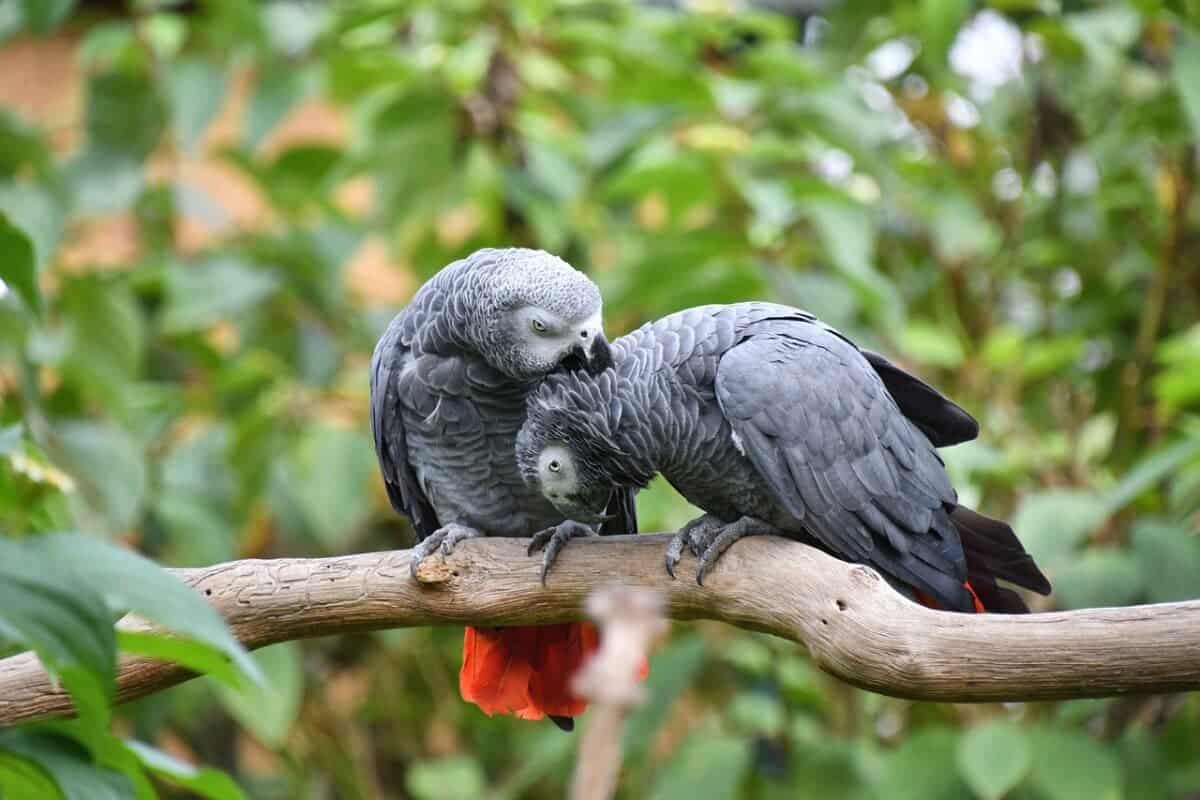
Description:
It is a medium-sized bird that is mostly grey in color. The length of the parrot is 33 centimeters, weighing only 400 grams. They have large wings with a span of 46 to 52 centimeters.
Geographical Distribution:
They are endemic to Africa and its regions close to the equator such as Cameroon, Gabon, Ghana, Uganda, Ivory, Kenya, Congo, and Angola.
Level Of Endangerment:
Its population is close to 630,000, but is decreasing immensely. Their endangerment started due to being traded in the international market.
Diet:
The majority of their diet compromises of fruits and nuts. They also consume flowers and tree bark as a part of their diet.
#4 Hawaiian Crow
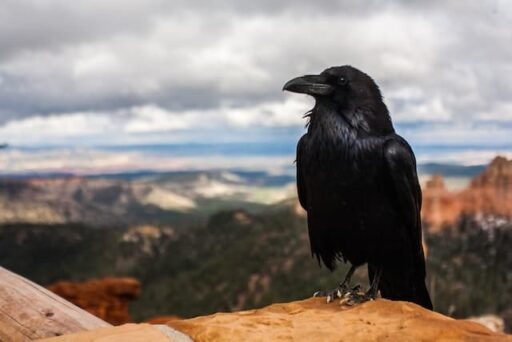
Description:
The Hawaiian crow belonged to the crow family, having a wingspan of 50 centimeters. The difference between a regular crow and a Hawaiian crow is that it compromised a thicker bill with rounded wings.
Geographical Distribution:
These species resided in the southwestern and western regions of Hawaii. Findings of fossils indicate that they have been present there in large quantities.
Level Of Endangerment:
The reason as to why these species became extinct is not fully concluded. It is believed they fell victim to various diseases such as fowlpox, toxoplasma gondii, and avian malaria which resulted in the extinction of these birds.
Diet:
These species were omnivores, they fed on both plants and animals. 50% of their diet was consumed through branches and trunks while the other half was by feeding on land snails and isopods.
#5 Fruit Doves
Description:
This bird belongs to the dove family and is a small to a medium-sized bird. Their tail is short in size having the shape of a fan. They have glossy and colorful bodies similar to that of a fruit. The colors of the males and females differ as the former has a green-colored crimson crown while the latter has a pink crimson on their upper back.
Geographical Distribution:
These birds only live on the island of New Guinea situated in the Philippines.
Level Of Endangerment:
These bird species are highly vulnerable to extinction with only 54 individuals left on the island. Its population started declining when tree snakes hijacked their habitats and fed off of them.
Diet:
Fruit doves mainly feed themselves with fruits. Their colorful combinations are no match to the colors of other bird species.
#6 Piping Plover
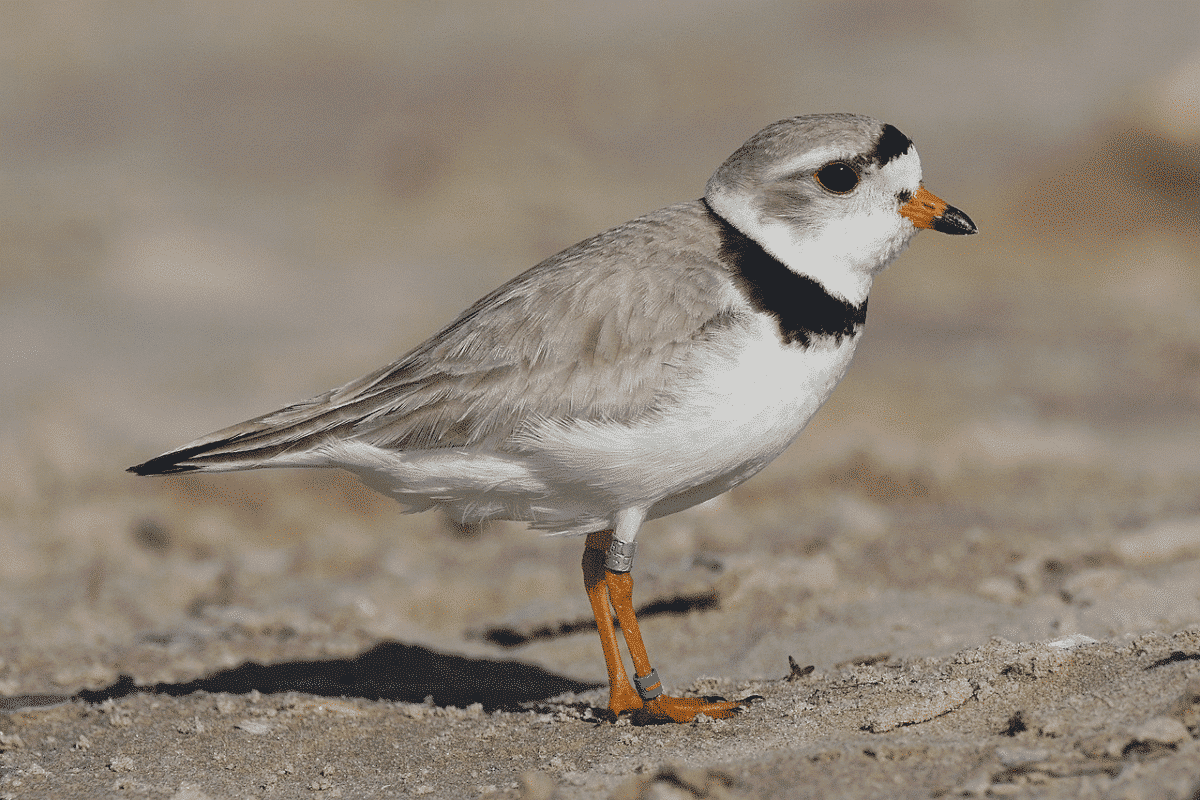
Description:
This bird species comprises a round head and a thick short neck. It has dull khaki skin similar to the color of sand. Mature birds have yellow-orange legs. The males have a more prominent marking than females – a black band that continues from their forehead to their eyes.
Geographical Distribution:
They have lived most of their life near rocky shores, on the high elevation where the area is dry. They reside in the regions of the Atlantic coast in the US and Canada near oceans and beaches.
Level Of Endangerment:
The current population of piping plovers is less than 10,000 individuals globally. Their numbers declined due to recreational activities on the beaches disrupting their habitat.
Diet:
Since they reside near beaches, their diets consist of fly larvae, crustaceans, marine worms, mollusks, and other similar marine animals.
#7 White-Rumped Vulture
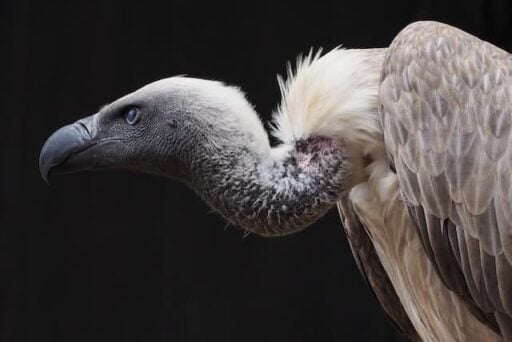
Description:
This bird is similar to a medium size vulture having a featherless head and neck. They have short tails with big broad wings. Its body is black with a white ruff around their neck.
Geographical Distribution:
White-rumped vultures have been endemic to the regions of south and southeast Asia.
Level Of Endangerment:
They are on the red list of endangerment, the remaining number of these birds is 6000 beings, which is declining yet. Their shortfall started when they fell victim to kidney failure due to diclofenac (anti-inflammatory drug) poisoning.
Diet:
The main source of their diet was feeding on carrions and the remains of cattle.
#8 Ivory-Billed Woodpecker
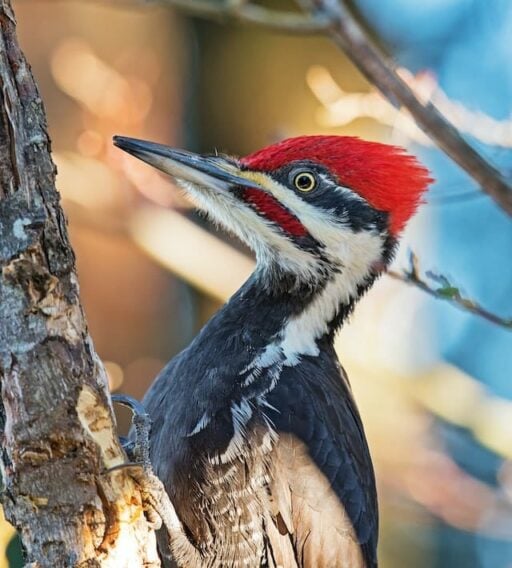
Description:
The Ivory-billed woodpecker is the largest among the woodpecker species. They have purple-black feathers on their body with white lines running down from their cheeks to necks.
Geographical Distribution:
These bird species are native to the United States, residing in the bottomland forests and temperate coniferous forests.
Level Of Endangerment:
These species are listed as critically endangered species on the red list as their remaining population comprises less than 50 birds. Their decline started when they fell victim to human hunting and the demolition of their habitats.
Diet:
They prefer to eat beetle larvae and certain vegetables.
#9 Kiwi
Description:
It is a flightless bird and has a body shape similar to that of a pear. They have a long beak and furry legs. The fur coating on their body is thin with a hair-like texture.
Geographical Distribution:
It is a recognized bird species of New Zealand.
Level Of Endangerment:
These bird species are vulnerable to endangerment as only 68,000 individuals remain. They became victims of extinction due to the loss of habitats in the process of deforestation by humans.
Diet:
They are omnivores in nature and like to feed on worms, bugs, seeds, grubs, and berries.
#10 Great Curassow
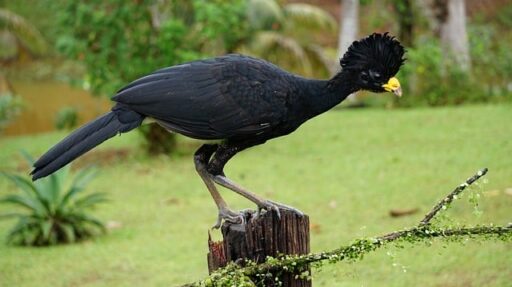
Description:
It is a large-sized bird belonging to the cracid family. They are black with curly chests and the abdominal is white in color. Their weight ranges from 3.1-4.8 kg.
Geographical Distribution:
These birds reside in neotropical rainforests that stretch from eastern Mexico to Central America and Northwestern Ecuador after crossing Western Columbia.
Level Of Endangerment:
Their population comprises less than 40,000 adults and is vulnerable to endangerment. Their shortfall begun when they fell prey to hunting and when their habitats disintegrated.
Diet:
They feed on seeds, fruits that fall from trees, and berries.
#11 Regent Honeyeater
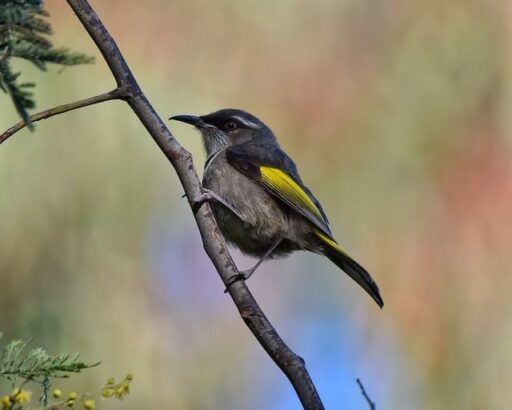
Description:
Their head and neck are a shiny black color. In contrast, their chest has complimenting shades of pale yellow speckles. Wing and tail features are black with a presence of vibrant yellow color.
Geographical Distribution:
This bird is native to southeast Australia. It forms its habitats in wooded areas.
Level Of Endangerment:
They are vulnerable to extinction as only 400 beings remain of these species. The number is still declining due to an increase in deforestation.
Diet:
Their main source of food is eucalyptus nectar. They also munch on insects and their honeydew.
#12 Kakapo
Description:
It is like a large and rounded parrot. These are flightless birds as they have small wings. The features on their body are spotted in color combinations of black, grey, and brown. These birds can retain a large amount of body fat.
Geographical Distribution:
Kakapos are endemic to New Zealand. They form their habitats on the ground as they are flightless birds.
Level Of Endangerment:
There are only 252 individuals of these species alive today as they often fall victim to loss of habitat, or fall prey to rats, cats, and stoats.
Diet:
They are herbivores by nature and only consume plant-based foods such as fruits, rimu branches, and supple jacks.
#13 Northern Bald Ibis
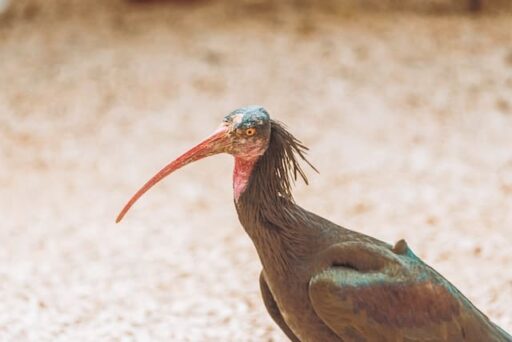
Description:
It is a large shiny black bird having a combination of black, bronze, green, and violet colors in its features. They have featherless red faces and legs. These are powerful birds in terms of flight as they have flexible wings.
Geographical Distribution:
These birds inhabit the stranded semi-deserts and rocky habitats in the Middle East, Central and southern Europe, and Northern Africa.
Level Of Endangerment:
These birds are endangered, assumingly due loss of habitats and hunting.
Diet:
They included a variety of food items in their diet comprising grasshoppers, crickets, beetles, and small reptiles.
#14 Hooded Grebe
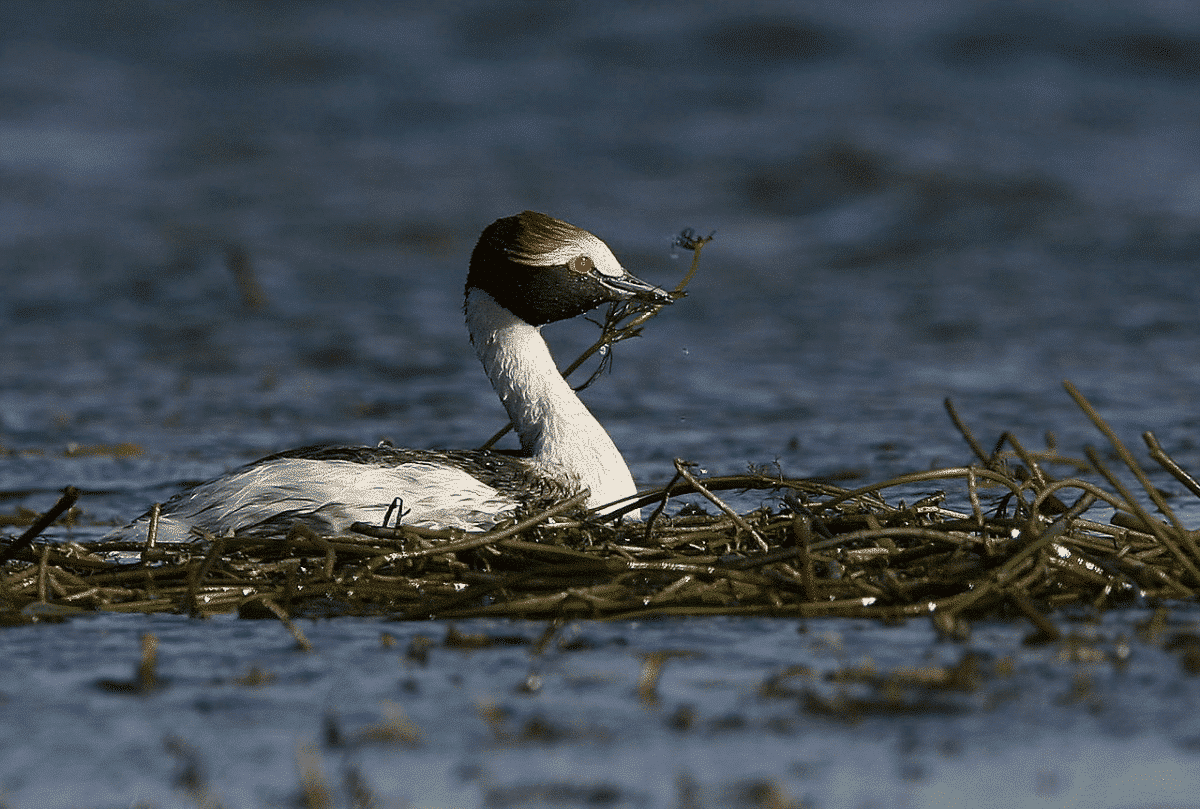
Description:
Their body is mainly white with a dark grey back and white sides. They have white lines on their forehead and a red colored beak.
Geographical Distribution:
These species have been found in West Argentina, South Chile and Laguna Blanca. Typically forming their habitats on winter grounds, coast, and lakes.
Level Of Endangerment:
The remaining population of these species is less than 1000 birds. Climate change is the primary reason for this. However, the number of these birds is stable due to the conservation measures taken to preserve these species.
Diet:
As they form their habitats near aquatic sections the primary source of their diet is aquatic invertebrates.
#15 Ultramarine Lorikeets
Description:
These colorful birds are members of the parrot family. Their feathers are in brilliant shades of blue, including a turquoise head, which nicely contrasts their bold orange beaks and legs.
Geographical Distribution:
This species inhabits the French Polynesian islands, including Fatu Hiva, Ua Pou, Nuku Hiva, and Ua Huka.
Level Of Endangerment:
Ultramarine Lorikeets are critically endangered, with fewer than 1,000 birds alive. Their number is in rapid decline due to habitat destruction.
Diet:
They have a varied diet consisting of blossoms, insects, and various fruits.
#16 California Condor
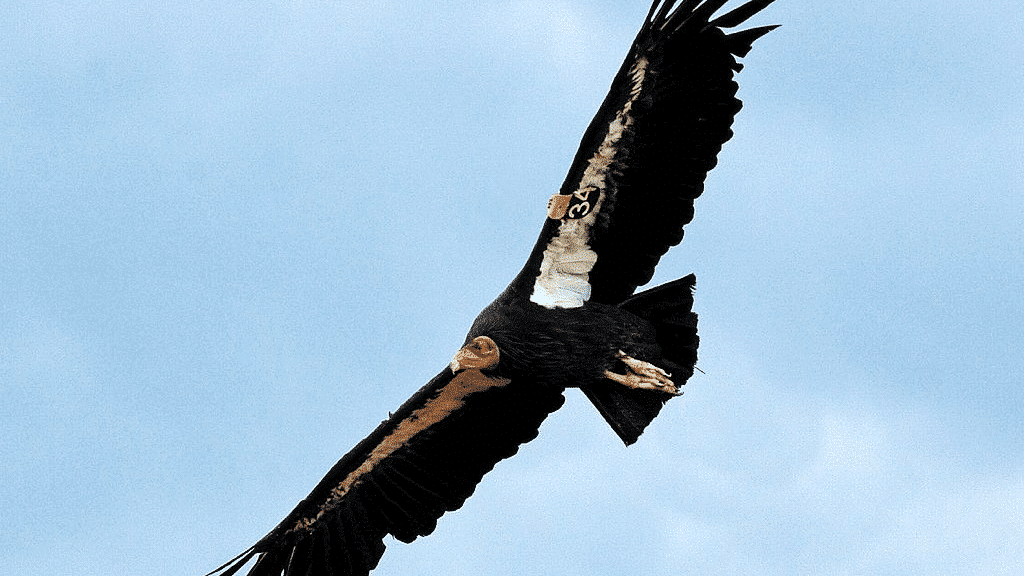
Description:
It is a large black bird who has white triangular patterns underneath its wings. They have grey legs and feet while their eyes are brown-red. The average weight of these birds is 7- 14 kilograms.
Geographical Distribution:
This bird resides in the deserts of Central southern California, mainly areas with rocky cliffs. They also exist in the regions of Mexico, Arizona, and Utah.
Level Of Endangerment:
They are critically endangered as less than 500 individuals remain in their population. Their population decreased drastically due to poaching, habitat degradation, and lead poisoning.
Diet:
Their personal preference is to feed on large dead animals such as cattle, sheep, and deer. They also feed on small animals like rabbits, rodents, and even fish.
#17 Whooping Crane
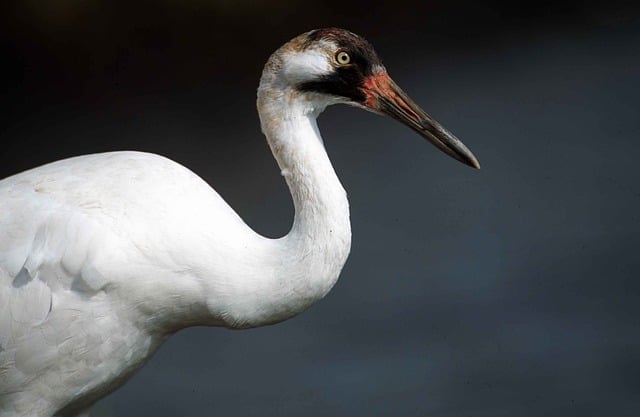
Description:
A mature whooping crane is white in color, having a red crown with a long dark pointed bill. When they fly they ensure to keep their long necks straight in line while stretching their legs at the backside. Cranes have black wing tips that are visible during their flight in the sky.
Geographical Distribution:
This bird is native to North America and is often found in the regions nearby in Canada and Alberta. They form their nests on the grounds.
Level Of Endangerment:
These birds are close to extinction as only 800 birds remain in the wild. Their shortfall started with the loss of their habitats and falling victim to human poaching for their meat and features.
Diet:
Being omnivores, they prefer to consume animals rather than plants. They feed while walking in shallow water. Their preferences include eel, crustaceans, frogs, aquatic plants, and insects.
The Last Words
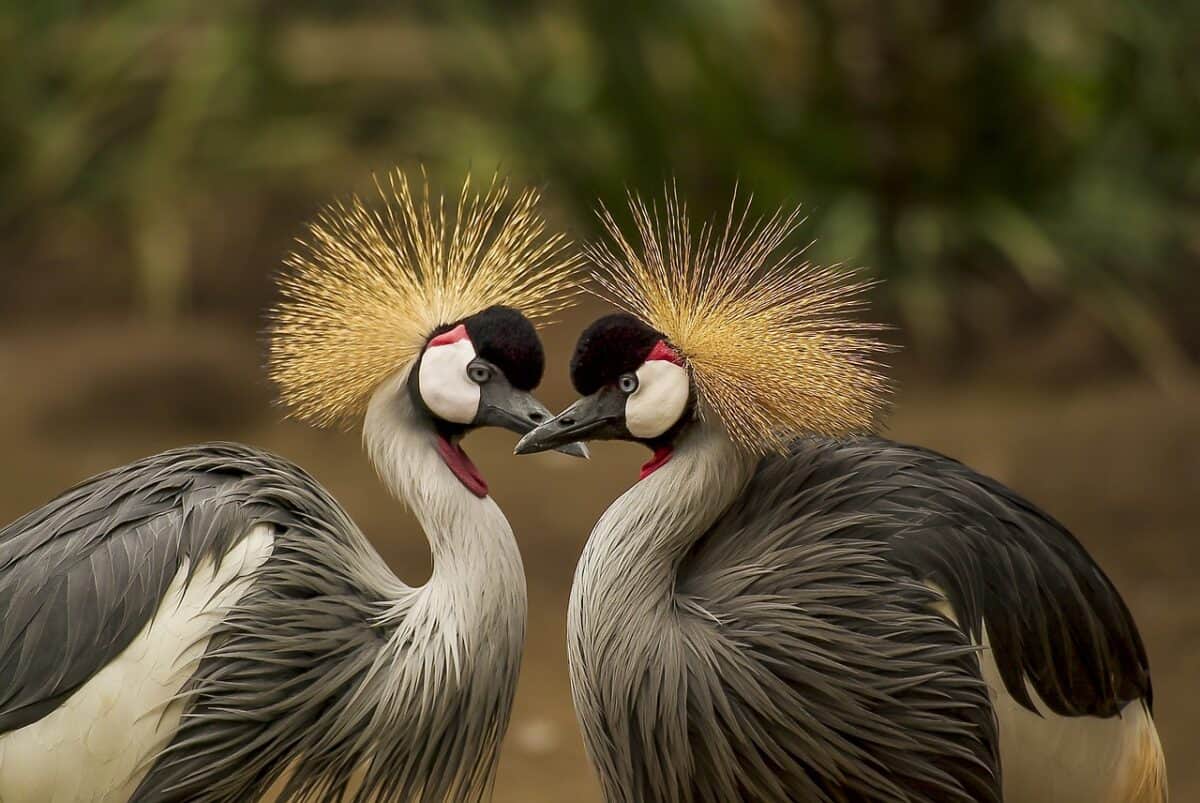
Above was a list of endangered bird species that are now extinct or are vulnerable to extinction. These birds have different traits and characteristics which sets them apart from other bird species.
Some have vibrant and beautiful color combinations which are not found in any other bird species. They surely are a work of art and an attraction to the eyes.
Many of them falls victim to human poaching who uses the features of these birds for monetary value. Some of them were hunted simply for recreational purposes. Other reasons for their endangerment are climate change and deforestation. This resulted in the loss of their habitats and falling prey to hunting by other animals.
We as humans must preserve the population of these bird species as they play a very important role in our ecosystem.
Precautionary measures are taken by various organizations to preserve these species and increase their population through breeding. To find out how scientists help animals breed click here.
Thank you for reading this article! These are the most endangered species inhabiting the sky, if you want to learn more about the most endangered species inhabiting the oceans you should read about the 11 Most Endangered Whales.
Frequently Asked Questions (FAQs)
You can get involved in bird conservation by supporting organizations dedicated to bird protection, volunteering for local bird monitoring programs, participating in bird habitat restoration projects, and advocating for policies that protect bird habitats and combat climate change. Additionally, consider joining birdwatching clubs and educating others about the importance of bird conservation.
one example is the California Condor. It went extinct in the wild in 1987, leading to an intensive conservation mission by the US Department of Interior (DOI). They captured the remaining 26 individuals in the wild and initiated a breeding program. While the population has increased to over 400, there are still only as few as 44 condors left in the wild, making them critically endangered.
Yes, certain groups of birds are more endangered than others. Some of the most at-risk groups include parrots (due to habitat loss and the illegal pet trade), seabirds like albatrosses and petrels (threatened by longline fishing and invasive species), and birds of prey such as eagles, vultures, and hawks (endangered by habitat loss, poisoning, and hunting).
Join our Forum for free today!


